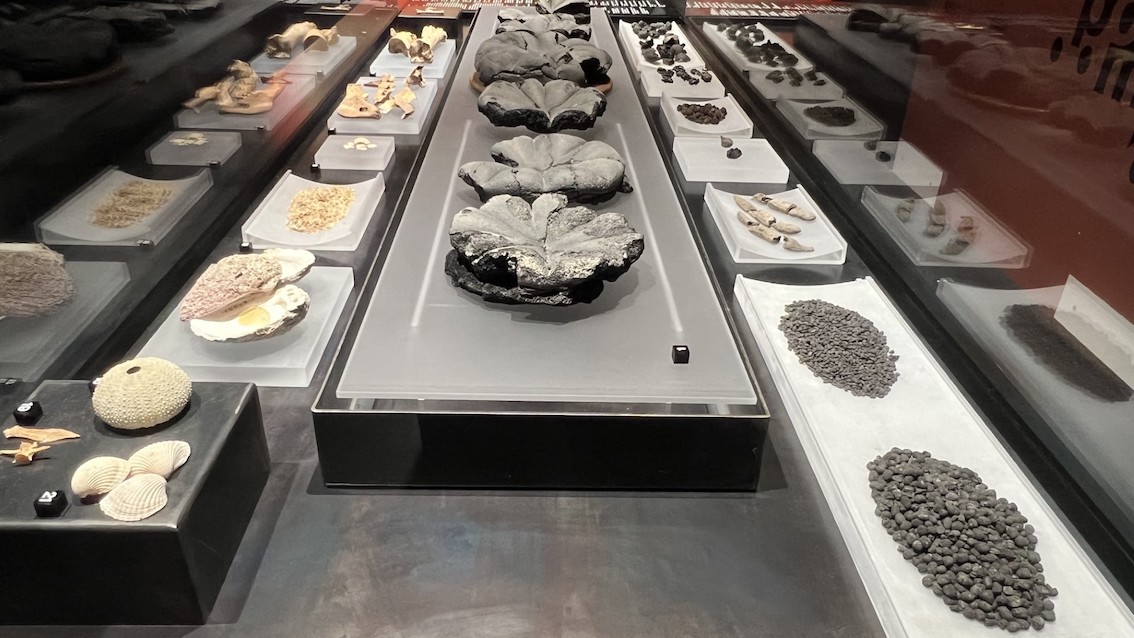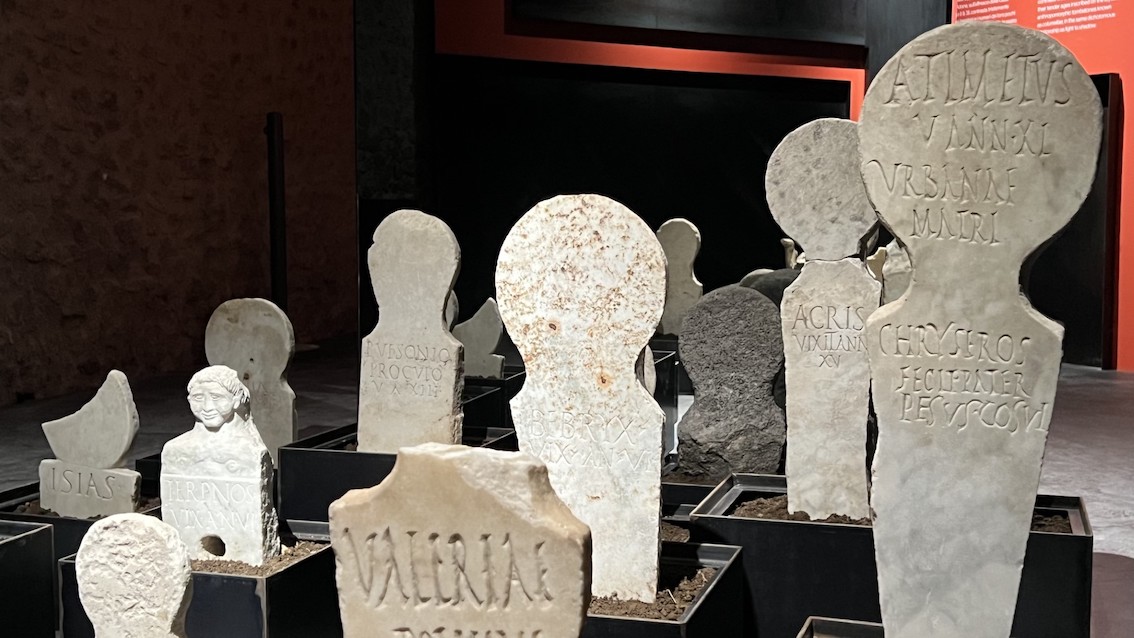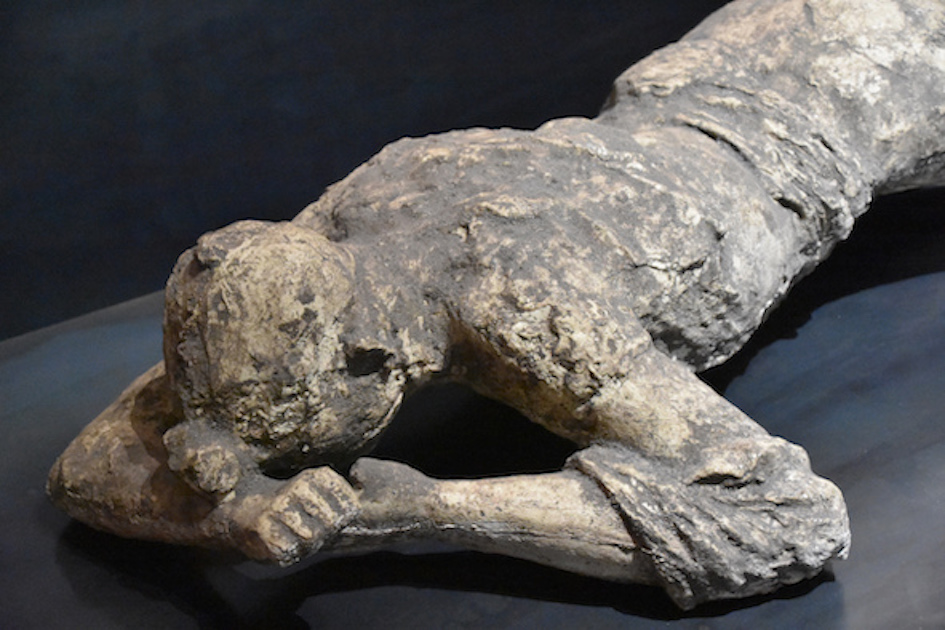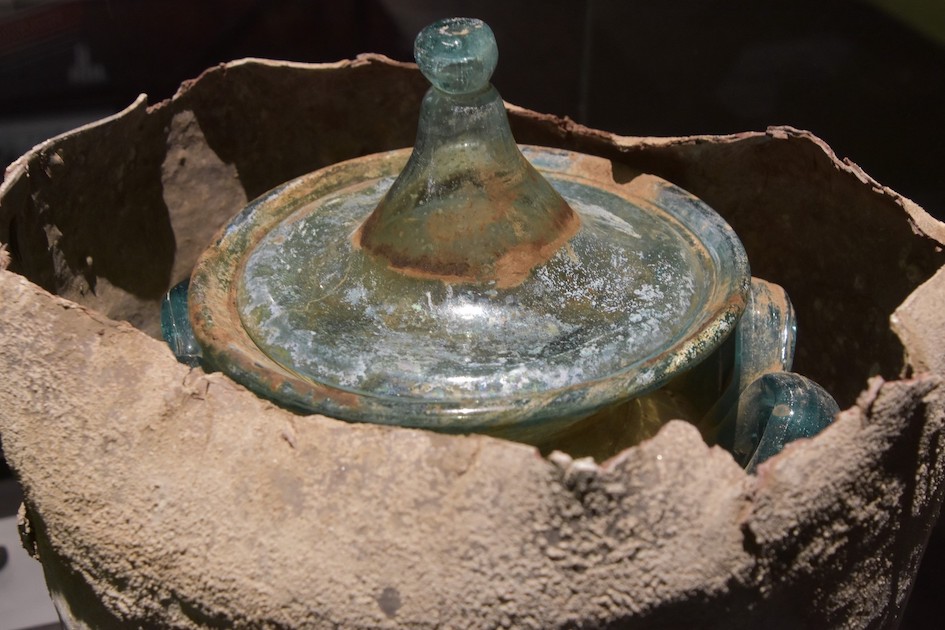When Mount Vesuvius erupted in 79 A.D., at least 3,000 of Pompei’s approximate 15,000 inhabitants were killed buried under continuous waves of 700° ash containing toxic gas. The deceased were either the wealthy who didn’t want to abandon their valuables or the poor and slaves with nowhere else to go.
With over 4 million visitors in 2023, Pompei was Italy’s 2nd most visited tourist destination after the Colosseum.
On view in its Great Gymnasium until December 15, 2024 is the temporary exhibition “The Other Pompei, Ordinary Lives in the Shadow of Mount Vesuvius”. For the first time ever, an exhibition (included in the site’s entrance fee, its catalog in Italian and English versions: 36 euros) delves into the daily lives of the city’s less affluent classes: artisans, shopkeepers, prostitutes, and freedmen, who accounted for 50% of the population, plus slaves from Syria, Jerusalem, Africa, Northern Europe, and Greece, for an additional 30%.

Almost all the 300 artifacts, on display for the first time, come from the site’s storerooms. They’re divided into seven aspects of daily life: childhood; food and nutrition; family; clothing and accessories; leisure time and entertainment; travel, other cultures and commerce; ending with religious faith, death, and the afterlife.
Survival during pregnancy, childbirth, infancy and childhood were precarious for Pompei’s lower classes and slaves. Infanticide and abandonment at birth were legal and the mortality rate during the first year of life was 30% to 40%. Around 50% of those who survived infancy didn’t reach their tenth birthday. On display in “Infancy” are marble statues and a fresco of happy small children playing with their pet ducks, but these artworks purposefully contrast with numerous marble or stone burial markers, known as columellae, of a stylized anthropomorphic shape inscribed with the name and age of the dead child.

The centerpiece of “Food and Nutrition” is a long table with charred food remnants: loaves of bread flanked by grains, legumes, carobs, walnuts, pomegranates, figs, egg shells, and fish-and-animal-bones. All Pompeians ate large quantities of bread, hence the large number of bakeries (some 35) excavated so far, but slaves were kept on a rationed, high-energy diet and largely subsisted on bread, legumes, vegetable soups, and only occasionally dried fruits and olives. Instead, the lower and middle classes had access to local fish and chicken eggs, the quantity depending on their finances. In addition to the central table on display here are terracotta crockery and glassware as well as two frescoes, one depicting fish and eels, the other a cockerel and exotic fruits, foods eaten by the wealthy.
Slaves, devoid of all rights, were considered tools and shackled if they rebelled. On display in “Servile Family” are reproductions of slaves’ rope cots, shackles, an inscribed gold serpent-shaped armband probably a gift from her master to his favorite slave, and frescoes of slaves being violated for their masters’ sexual pleasure. This practice was not considered prostitution, which took place in brothels for a fee.

“Clothing and Beauty Care” displays many plaster casts of the dead, some partly clothed. Slaves and the lower classes possessed only one tunicatus populus, usually made of burlap, and weren’t allowed to wear above it the toga reserved for the elite. The most common tunic was the hesomide, which reached only halfway down the thigh and was stopped at the waist by a belt. Several of the plaster casts are wearing wool tunics so Vesuvius probably erupted during the autumn not summer, as believed until recently. Also on display here are charred textile fragments, numerous fibula, buckles, jewelry, combs, hairpins tweezers, and bronze mirrors.

The centerpiece of “Entertainment and Leisure Time” is a large terracotta mask worn by male actors, who were often slaves- as were the gladiators. However, when slaves accompanied their masters to the baths, they too could enjoy the waters and treatments. Gambling was the most widespread local “sport”, (practiced at all social levels, but class-divided) confirmed by the large number of dice and their shakers on display alongside board games, another popular pastime. However, the main celebration of the year was the Saturnalia in mid-December, when the differences between Pompeians and their slaves were abolished.
In “Travel and Commerce” a model wooden boat filled with amphorae symbolizes the importance of maritime travel for commerce. Wall panels show the trade routes around the Mediterranean and the merchandise to and from Pompei; exports: terracotta pottery to contain the imports: wine from Asia Minor and Greece; oil from North Africa; garum from Sicily and Spain; and dried fruit from the Middle East. Slaves were also merchandise, not to mention that they were Pompei’s contacts with different cultures.
Among the lower-class Pompei’s most popular cults were to Dionysus and Isis, represented here by many small home-shrines’ statues. Associated with commerce and agriculture, like the seasons, they centered around the promise of a better life on earth and after cremation, Pompei’s predominant funerary rite.












